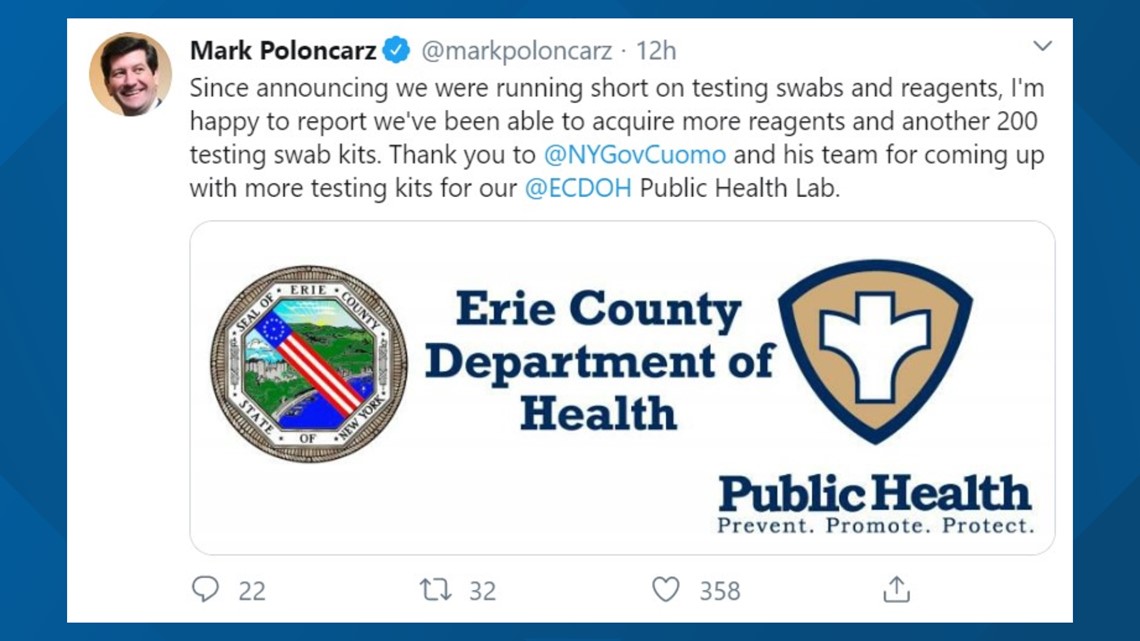BUFFALO, N.Y. — Just hours after announcing the Erie County Public Health Laboratory was running low on testing supplied for COVID-19, County Executive Mark Poloncarz tweeted this:


The testing components include patient kits which are comprised of a swab that's inserted inches into both nostrils. The kits are single-use. So, the additional 200 kits means another 200 people can be tested.
The samples from the kits are processed using special chemical reagents:


Maintaining these supplies will be critical to being able to confirm COVID-19 cases in western New York. The Erie County lab is processing tests from counties in this region.
Human coronaviruses are usually spread through...
- The air by coughing or sneezing
- Close personal contact, such as touching or shaking hands
- Touching an object or surface with the virus on it, then touching your mouth, nose or eyes before washing your hands.
Help stop the spread of coronavirus
- Stay home when you are sick.
- Eat and sleep separately from your family members
- Use different utensils and dishes
- Cover your cough or sneeze with your arm, hot your hand.
- If you use a tissue, throw it in the trash.
Lower your risk
- Wash your hands often with soap and water for at least 20 seconds. If soap and water are not available, use an alcohol-based hand sanitizer.
- Avoid touching your eyes, nose, and mouth with unwashed hands.
- Avoid close contact with people who are sick.
- Clean and disinfect frequently touched objects and surfaces.
- If you are 60 or over and have an underlying health condition such as cardiovascular disease, diabetes or respiratory illnesses like asthma or COPD, the World Health Organization advises you to try to avoid crowds or places where you might interact with people who are sick.

